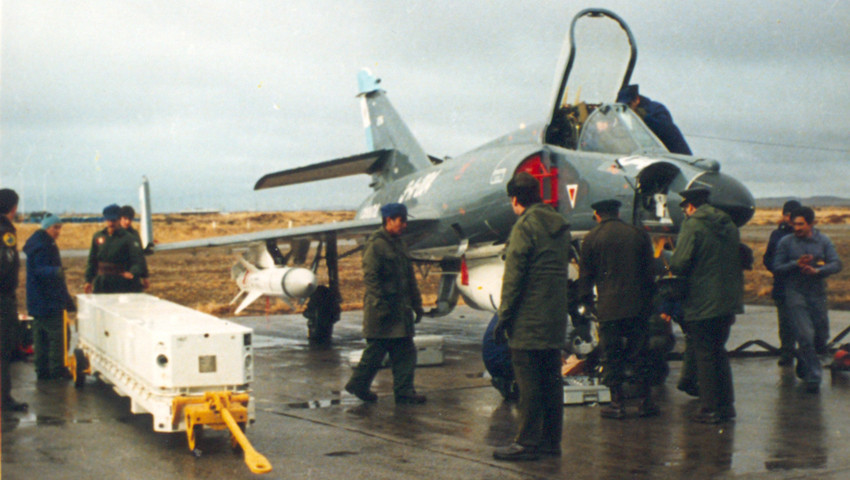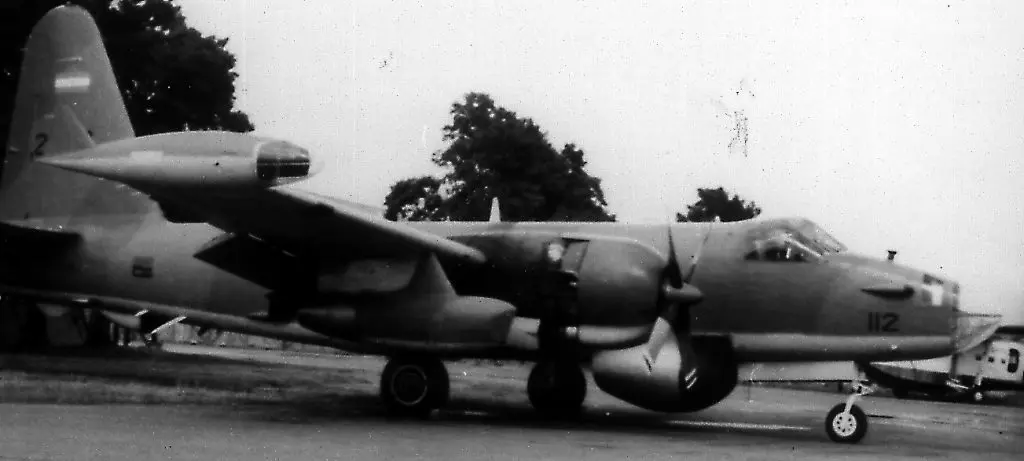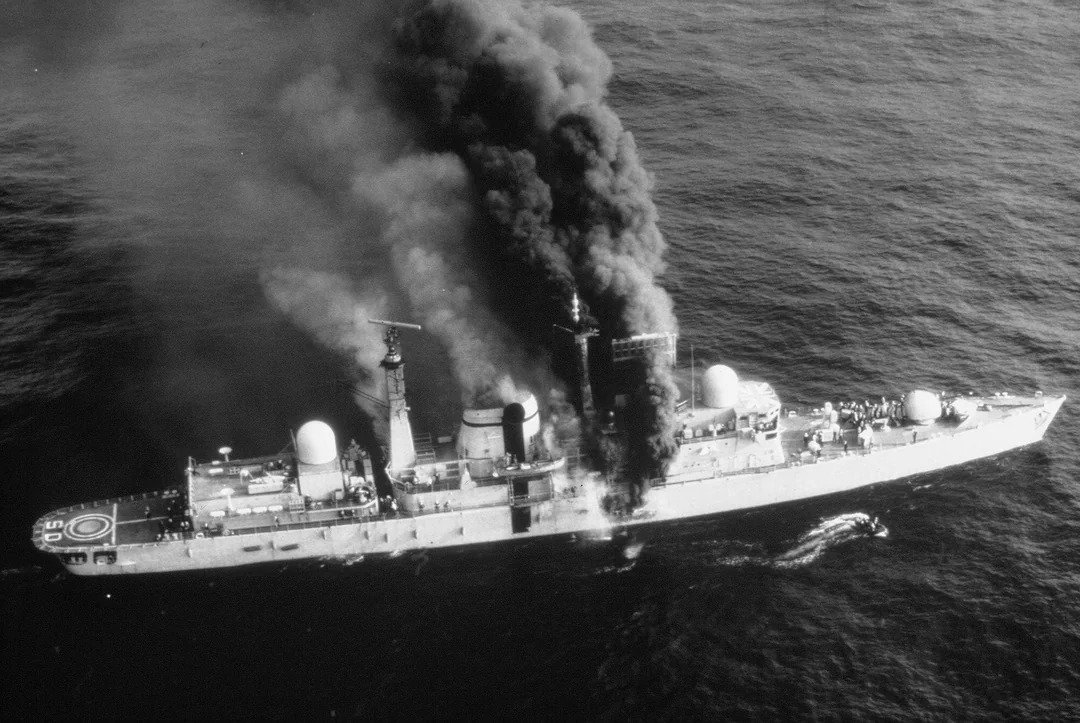4 de mayo de 1982, a 42 años de este día; dos aviones Súper Etendard de la 2da. Escuadrilla Aeronaval de Caza y Ataque de la Armada Argentina, piloteados por los entonces Capitán de Corbeta Augusto César Bedacarratz y el Teniente de Fragata Armando Raúl Mayora, siendo reabastecidos de combustible en vuelo por un avión Hércules C-130 de la Fuerza Aérea, atacan con misiles AM-39 Exocet al destructor HMS Sheffield, que navegaba en latitud 52º 48' S, long. 57º 40' W.

El ataque al destructor británico clase 42 HMS “Sheffield” fue una acción coordinada entre un SP-2H Neptune explorador y los dos Super Etendard. Usaron una táctica jamás empleada en la historia de la aviación militar de combate: la combinación “explorador-avión de ataque”, inaugurando así un capítulo en la doctrina de las operaciones aéreas navales.
Como resultado de ello, el Sheffield fue hundido. Constituyendo esa acción un cambio en la doctrina de la guerra aeronaval para el mundo entero.
La fuerza naval inglesa que integraba ese buque, había sido localizada por el avión Neptune 2-P-112 de la Escuadrilla Aeronaval de Exploración, al mando del entonces Capitán de Corbeta Ernesto Proni Leston.

El Neptune descubrió un blanco al que identificó como destructor tipo 42, mediante el procesamiento de sus señales electrónicas y lo ubica en la posición 52º 33’ Latitud Sur y 57º 40.5’ Longitud Oeste; inmediatamente transmitió esa información.
Así, se ordenó el despliegue de los Super Etendard de la Segunda Escuadrilla Aeronaval de Caza y Ataque, el 3-A-202 al mando del Capitán de Corbeta Augusto Bedacarratz y el 3-A-203 al mando del Teniente de Fragata Armando Mayora, equipados con misiles Exocet.
Durante la aproximación de los Super Etendard al blanco, el Neptune mantiene la exploración en contacto, actualiza a los pilotos de ataque la posición, rumbo y velocidad del “Sheffield” hasta que lo detectan los radares de los aviones de ataque argentinos.
A partir de ese momento, las acciones suceden con vértigo: el radar alimenta con la información actualizada al sistema de navegación y ataque de los Super Etendard y los pilotos lanzan sus misiles Exocet AM-39 que causan el hundimiento del destructor.
Este ataque misilístico constituye un hito en la historia y en las tácticas y doctrina de la guerra aeronaval moderna en el mundo. Por esta razón, y en conmemoración de esta acción, se instituyó el 4 de mayo como el Día de la Aviación Naval de la Armada Argentina.
Fue la primera acción de guerra con medios aéreos de la Armada Argentina, que resultaron victoriosos contra una potencia enemiga y el primer buque británico echado a pique por fuerzas argentinas.

La Tripulación del 2-P-112 estaba integrada por:
Piloto Capitán de Corbeta Ernesto Proni Leston.
Copiloto Capitán de Corbeta Sergio Sepetich.
Navegante Teniente de Fragata Juan Gatti.
O.C.O. Teniente de Corbeta Guillermo Meneses.
Radarista Teniente de Corbeta José María Pernuzzi.
Mecánico Suboficial Primero Juan Heredia.
Ayudante Mecánico Cabo Principal Hugo Saavedra
Radio Cabo Principal Daniel Yerba.
Operador M.A.E. Suboficial Primero Aníbal Sosa.
Armas:
Cabo Principal Luis del Negro.
Cabo principal Luis Núñez.
Supervivencia Cabo Primero Cesar Fernández.
Fuente:
INSTITUTO AERONAVAL






